Table Of Contents:
- Introduction to Behavioral Finance:
- Understanding Cognitive Biases in Trading:
- Common Cognitive Biases Impacting Trading Decisions:
- Recent Trends and Challenges in Behavioral Finance:
- Strategies to Mitigate Cognitive Biases in Trading:
- Case Studies Illustrating the Impact of Biases on Trading:
- The Future of Behavioral Finance in Trading:
- Conclusion – Mastering the Mind in Trading:
- Frequently Asked Questions (FAQs):
- Q1: What is behavioral finance, and how does it relate to trading?
- Q2: How do cognitive biases affect trading decisions?
- Q3: Can you provide examples of common biases in trading?
- Q4: How can traders mitigate the impact of these biases?
- Q5: Are there tools or resources to help identify and overcome these biases?
- Q6: How does understanding behavioral finance improve trading performance?
- Q7: Is behavioral finance relevant only to individual traders?
- Q8: Can technology assist in overcoming trading biases?
- Q9: How can traders stay updated on developments in behavioral finance?
- Q10: What are the long-term benefits of applying behavioral finance principles in trading?
Introduction to Behavioral Finance:
Hey there, fellow traders and investors! Let's kick things off with a topic that's been gaining traction in our circles: behavioral finance. If you've ever found yourself making a trading decision that, in hindsight, seemed more emotional than logical, you're not alone. Behavioral finance dives into these very human quirks, helping us understand why we sometimes zig when the market zags.
What Exactly Is Behavioral Finance?
Why Should We Care?
Understanding behavioral finance isn't just academic – it's practical. By recognizing the psychological factors at play, we can:
- Improve Decision-Making: Being aware of biases like overconfidence or fear of loss can help us make more informed choices.
- Enhance Risk Management: Understanding our emotional triggers allows us to set more effective stop-loss orders and investment strategies.
- Navigate Market Anomalies: Markets aren't always efficient or predictable. Behavioral finance provides tools to understand and anticipate these irregularities.
Traditional Finance vs. Behavioral Finance:
Traditional finance theories, like the Efficient Market Hypothesis (EMH), suggest that markets are always rational and that all available information is already factored into asset prices. This implies that consistently outperforming the market is nearly impossible without taking on additional risk.
Behavioral finance challenges this notion by highlighting how psychological factors can lead to market inefficiencies. For instance, herd behavior can drive asset bubbles, while fear and panic can lead to market crashes. By studying these patterns, behavioral finance offers a more nuanced understanding of market dynamics.
A Personal Take:
I remember back in the day, during the dot-com bubble, I got swept up in the euphoria like many others. Ignoring fundamental analysis, I invested heavily in a tech startup because, well, everyone else was doing it. Needless to say, that didn't end well. It was a costly lesson in herd behavior and overconfidence – two key concepts in behavioral finance.
Wrapping Up:
Behavioral finance sheds light on the human side of trading, reminding us that markets are driven by people, not just numbers. By embracing its insights, we can strive to become more disciplined, self-aware, and ultimately, more successful in our trading endeavors.
Happy trading, and may your decisions be ever in your favor!
Understanding Cognitive Biases in Trading:
Picture this: you're sitting at your trading desk, analyzing charts, sipping coffee, and feeling pretty confident about your next move. You’ve done your homework, read the latest market updates, and everything seems to align perfectly with your plan. Then, out of nowhere, the trade goes south, leaving you scratching your head. Sound familiar? Welcome to the world of cognitive biases – a sneaky set of mental shortcuts that often lead us astray in trading.
What Are Cognitive Biases?
Common Biases That Impact Traders:
- Overconfidence Bias: Ever thought, "I've got this!" right before a trade tanked? That’s overconfidence bias. It happens when we overestimate our abilities or believe our knowledge is superior to others. While confidence is good, overconfidence can lead to taking excessive risks without proper analysis.
- Confirmation Bias: This one’s a classic. Confirmation bias occurs when we focus on information that supports our existing beliefs and ignore anything that challenges them. For instance, if you’re bullish on a stock, you might only pay attention to positive news, dismissing red flags that could save you from losses.
- Anchoring Bias: Anchoring bias kicks in when we rely too heavily on the first piece of information we receive. Say you bought a stock at $50, and even after market dynamics change, you can’t shake that initial price point from your decision-making. This bias can cloud your judgment and prevent you from adapting to new realities.
- Loss Aversion: Losses hurt – sometimes more than equivalent gains feel good. This bias can lead traders to hold onto losing positions far too long, hoping for a turnaround that may never come. It’s like refusing to fold in poker because you’re already "too invested."
- Herd Behavior: If you’ve ever jumped into a trade just because “everyone else is doing it,” you’ve fallen victim to herd behavior. While the fear of missing out (FOMO) is real, following the crowd blindly can lead to costly mistakes, especially in volatile markets.
Why This Matters:
Cognitive biases aren’t just quirks – they’re obstacles that can derail even the best trading strategies. By understanding and acknowledging them, you’ll be better equipped to make rational, well-informed decisions.
A Personal Take:
The Key Takeaway:
Recognizing cognitive biases is like spotting potholes on a road trip. You can’t avoid every single one, but knowing they’re there helps you navigate smoother and get closer to your destination. So, the next time you’re about to hit “buy” or “sell,” take a moment to check if a bias is creeping in. It might just save your trade – and your sanity!
Common Cognitive Biases Impacting Trading Decisions:
Hey there, fellow traders! Let's chat about something that often trips us up in the trading world: cognitive biases. These mental shortcuts can cloud our judgment and lead to less-than-ideal decisions. Recognizing them is the first step toward making smarter trades. So, grab your coffee, and let's dive in!
Overconfidence Bias:
Description and Examples in Trading Contexts:
Overconfidence bias is when we overestimate our abilities or the accuracy of our predictions. In trading, this might mean believing we're immune to market downturns or thinking our analysis is always spot-on. For example, a trader might take on large positions without proper risk assessment, convinced that their strategy can't fail.
Consequences on Trading Performance:
This bias can lead to excessive risk-taking and insufficient diversification. Overconfident traders may ignore warning signs, leading to significant losses. It's like driving a car too fast because you're sure you won't crash – until you do.
Loss Aversion:
Explanation of the Bias:
Loss aversion refers to our tendency to prefer avoiding losses over acquiring equivalent gains. In other words, the pain of losing $100 feels more intense than the pleasure of gaining $100.
Impact on Decision-Making and Risk Management:
This bias can cause traders to hold onto losing positions too long, hoping to recoup losses, or to sell winning positions too quickly to "lock in" gains. Both behaviors can hinder overall portfolio performance. It's like clinging to a sinking ship because abandoning it feels like accepting failure.
Herd Behavior:
Definition and Real-World Instances:
Herd behavior is the tendency to follow the crowd, assuming that the majority's decision is the correct one. In trading, this manifests as buying or selling assets because "everyone else is doing it."
Effects on Market Trends and Individual Traders:
This can lead to asset bubbles or sudden market crashes. Following the herd without conducting personal analysis can result in entering trades too late or exiting too early. Remember the GameStop saga? Many jumped in because others were doing it, not based on fundamentals.
Confirmation Bias:
Understanding the Tendency to Favor Information That Aligns with Existing Beliefs:
Confirmation bias is our inclination to seek out or give more weight to information that confirms our preexisting beliefs, while disregarding contradictory data.
Implications for Research and Analysis in Trading:
This can lead traders to make decisions based on incomplete analysis, reinforcing bad habits and leading to potential losses. It's like wearing blinders that only let you see what you want to see.
Anchoring Bias:
Explanation of Reliance on Initial Information:
Anchoring bias occurs when we rely too heavily on the first piece of information we receive (the "anchor") when making decisions. In trading, this might be the initial price at which we bought a stock.
Influence on Price Setting and Expectations:
This bias can cause traders to set arbitrary price targets or to hold onto positions based on initial purchase prices, rather than current market conditions. It's like being stuck in the past while the present moves on without you.
A Personal Anecdote:
Final Thoughts:
Being aware of these cognitive biases is crucial for making informed trading decisions. By acknowledging and addressing them, we can strive for a more rational approach, improving our chances of success in the markets. Stay sharp, question your assumptions, and happy trading!
Recent Trends and Challenges in Behavioral Finance:
Let's dive into some of the latest happenings in the world of behavioral finance. The market's been buzzing with new trends and challenges that are reshaping how we think about trading decisions. Grab your favorite beverage, and let's get into it!
Rise of Meme Stocks and Social Media Influence:
Analysis of the Impact of Online Communities on Trading Decisions:
Remember the GameStop and AMC Entertainment saga? Online communities, especially on platforms like Reddit's r/WallStreetBets, have shown they can move markets in ways we hadn't imagined. These groups rally around certain stocks, creating massive buying frenzies that defy traditional market logic. It's a wild ride, and it highlights how social media can amplify herd behavior, leading to significant market volatility.
Case Studies – GameStop, AMC Entertainment:
Take GameStop, for instance. In late 2024, a simple tweet from "Roaring Kitty" (Keith Gill) caused GameStop's stock to surge nearly 10% in premarket trading, reaching its highest level since June. This wasn't due to any fundamental business changes but rather the power of social media influence. Similarly, AMC Entertainment saw its stock prices soar as online communities rallied behind it, despite underlying business challenges.
Increased Market Volatility and Investor Behavior:
Examination of How Cognitive Biases Contribute to Market Swings:
Our brains are wired in ways that can sometimes lead us astray. Biases like loss aversion and herd behavior can cause us to make irrational decisions, especially during volatile market conditions. When we see a stock price plummeting, the fear of loss might push us to sell off quickly, even if holding could be the better long-term strategy. Conversely, seeing others buy into a rally can trigger FOMO (fear of missing out), leading us to jump in without proper analysis.
Strategies Investors Use to Navigate Volatile Markets:
So, how do we keep our cool when the market feels like a rollercoaster? Here are some strategies that might help:
- Diversification: Don't put all your eggs in one basket. Spreading investments across different asset classes can help mitigate risks.
- Setting Clear Goals: Know your investment objectives and time horizons. This clarity can prevent knee-jerk reactions to short-term market movements.
- Staying Informed: Keep up with market news and trends, but don't let sensational headlines drive your decisions.
- Mindfulness and Reflection: Be aware of your cognitive biases. Sometimes, taking a step back and reflecting can prevent impulsive decisions.
Technological Advancements and Algorithmic Trading:
Discussion on the Role of AI and Machine Learning in Mitigating or Exacerbating Biases:
Artificial intelligence and machine learning are revolutionizing trading. Algorithms can process vast amounts of data, identifying patterns that might elude human traders. They can help mitigate human biases by making decisions based purely on data. However, it's not all sunshine and rainbows. If these algorithms are trained on biased data or reflect the biases of their creators, they can perpetuate or even exacerbate existing biases.
Ethical Considerations and Potential Biases in Algorithmic Models:
There's an ongoing debate about the ethical implications of algorithmic trading. For instance, if an algorithm is designed to exploit certain market inefficiencies, is that fair game? Moreover, there's the risk of creating feedback loops where algorithms collectively drive market trends, leading to unintended consequences. It's crucial for developers and traders to remain vigilant about these ethical considerations, ensuring that technology serves to enhance market fairness and efficiency rather than undermine it.
A Personal Anecdote:
Final Thoughts:
The landscape of behavioral finance is continually evolving, influenced by technological advancements and the dynamic nature of human behavior. By staying informed and self-aware, we can navigate these challenges and make more rational, informed trading decisions. Remember, the market is as much about psychology as it is about numbers. Stay sharp, stay informed, and trade wisely!
Strategies to Mitigate Cognitive Biases in Trading:
Navigating the market can feel like a mental chess game where emotions, instincts, and snap judgments compete with logic and strategy. The good news? You’re not powerless against cognitive biases. By recognizing these mental traps and applying deliberate strategies, you can trade smarter and with greater confidence.
Education and Awareness:
Let’s start with the foundation: understanding. You can’t fix what you don’t see, so the first step is to recognize the biases that influence your decisions. Overconfidence might make you overestimate your abilities, while loss aversion could push you to hold onto losing trades far too long. Awareness of biases like these isn’t just theoretical – it’s the first step toward change.
Take time to learn about behavioral finance and common cognitive biases in trading. The more you know about how your brain works under pressure, the better you’ll be at spotting those sneaky thought patterns before they lead you astray. A great way to start? Reflect on past trades. Ask yourself: “Why did I make that choice? Was my reasoning sound, or was I driven by fear, greed, or overconfidence?”
Implementing Structured Decision-Making Processes:
Here’s where things get practical. Creating a structured trading plan is like building a strong foundation for a house – it holds everything together. By setting clear rules and processes, you can remove emotion from the equation and focus on executing a well-thought-out strategy.
Start with these steps:
- Define Entry and Exit Points: Before you even hit “buy” or “sell,” decide when you’ll enter and exit a trade. Base this on technical or fundamental analysis rather than gut feelings.
- Set Stop-Loss and Take-Profit Levels: Stop-loss orders limit your downside, while take-profit levels ensure you lock in gains. Having these predefined parameters keeps you disciplined, even when the market gets unpredictable.
- Follow Predefined Criteria: Whether it’s a checklist or a formula, make sure every trade meets your predetermined conditions. This removes the temptation to make impulsive decisions in the heat of the moment.
By sticking to your plan, you minimize knee-jerk reactions and maintain consistency – two critical factors in long-term trading success.
Utilizing Technology and Tools:
In a world where technology has revolutionized everything, why not let it work for you in trading? Tools like algorithmic trading platforms, trading bots, and analytics software can help reduce the influence of emotions on your decisions. These technologies rely on data, not feelings, to execute trades, which helps ensure a more rational and disciplined approach.
But remember, while technology can mitigate some biases, it’s not a magic wand. Tools are only as effective as the trader using them. Understanding their limitations and maintaining oversight is essential.
Mindfulness and Emotional Regulation:
Trading isn’t just a numbers game; it’s a mental game, too. The market’s ups and downs can be stressful, but keeping your emotions in check is key to staying level-headed and making sound decisions.
- Practice Mindfulness: Techniques like deep breathing, meditation, or simply taking a moment to step back and center yourself can help you stay focused. Being mindful doesn’t mean suppressing emotions: it means acknowledging them without letting them control your actions.
- Limit Trading Under Stress: If you’ve had a rough day or are feeling overwhelmed, consider stepping away from the market. Trading under stress often leads to impulsive decisions.
- Take Breaks: Regular breaks during trading sessions can help you avoid burnout and maintain clarity, especially during highly volatile market conditions.
By managing stress, you can trade with a clear head, which is crucial when the stakes are high.
Keeping a Trading Journal:
One of the most underappreciated tools in a trader’s arsenal is a trading journal. By tracking every trade, along with your thoughts, emotions, and reasoning at the time, you create a goldmine of self-insight.
- Log Key Details: Record entry and exit points, market conditions, and the rationale behind each trade.
- Analyze Patterns: Over time, you’ll notice trends in your behavior. Maybe you’re consistently overconfident after a winning streak, or perhaps fear holds you back after a loss.
- Learn and Adapt: Use your journal to identify biases and adjust your strategies. The goal isn’t just to track trades: it’s to understand yourself as a trader.
This habit doesn’t just help you improve; it keeps you accountable to your own process.
Adopting a Long-Term Mindset:
Finally, remember that trading is a marathon, not a sprint. Biases often push us toward short-term thinking – like chasing quick gains or panicking over minor losses. By focusing on long-term goals, you can override these impulses.
- Think in Probabilities: No single trade will make or break your career. What matters is your overall success rate over time.
- Celebrate Progress, Not Perfection: Avoid dwelling on individual mistakes or missed opportunities. Instead, focus on refining your approach and improving step by step.
Trading is as much about personal growth as it is about financial gain. By tackling your biases head-on, you’ll not only make better decisions – you’ll become a more disciplined, resilient, and confident trader.
Case Studies Illustrating the Impact of Biases on Trading:
Trading isn't just about numbers; it's a psychological battlefield where our minds can be our own worst enemies. Let's dive into some real-world examples where cognitive biases led traders astray, and see what lessons we can learn to keep our portfolios in the green.
The Dot-Com Bubble – When Everyone Wanted a Piece of the Internet Pie:
Back in the late '90s, the internet was the new frontier, and everyone wanted in. Companies with ".com" in their names saw their stock prices skyrocket, often without solid business models to back them up. This frenzy was a classic case of herd behavior, where investors piled in because everyone else was doing it. Overconfidence played a big role too; many believed the tech boom would never end. But as we know, bubbles burst. By 2000, the market crashed, and those who got caught up in the hype faced significant losses.
2008 Financial Crisis – The Perils of Ignoring the Red Flags:
The housing market seemed unstoppable in the mid-2000s. Banks were handing out mortgages like candy, and investors couldn't get enough of mortgage-backed securities. Confirmation bias was rampant; people saw what they wanted to see and ignored warning signs. Loss aversion also kept investors holding onto bad assets, hoping for a turnaround that never came. When the bubble burst, it led to a global financial meltdown, teaching us the hard way about the dangers of ignoring inconvenient truths.
COVID-19 Pandemic Market Reactions – Fear, Panic, and Missed Opportunities:
The onset of the COVID-19 pandemic in early 2020 sent shockwaves through the global economy, leading to unprecedented market volatility. Investors worldwide grappled with fear and uncertainty, resulting in significant market sell-offs. A study examining financial behavior during this period highlighted the prevalence of cognitive biases, such as overconfidence and herd behavior, which influenced investor decisions and contributed to market instability.
Lessons Learned – Keeping Biases in Check:
These case studies highlight how cognitive biases can lead to poor trading decisions. Being aware of these pitfalls is the first step to avoiding them. Always do your own research, question the consensus, and don't let fear or greed drive your investments. Remember, the market rewards the rational, not the emotional.
The Future of Behavioral Finance in Trading:
As we look ahead, the landscape of trading is evolving, and so is our understanding of the psychological factors that influence it. Let's explore how behavioral finance is shaping the future of trading and what that means for us as investors.
Integration with Traditional Financial Theories – A Holistic Approach:
Traditionally, financial theories have assumed that markets are efficient and that investors are rational. However, behavioral finance challenges these assumptions by highlighting how psychological factors and cognitive biases can lead to market anomalies. The future of trading lies in integrating these insights with traditional financial models to create a more comprehensive understanding of market dynamics. This integration can lead to better risk management strategies and more accurate asset pricing.
Emerging Research and Areas of Interest – Unveiling New Biases:
The field of behavioral finance is continually evolving, with researchers uncovering new cognitive biases that affect trading decisions. For instance, studies are exploring how biases like overconfidence and loss aversion influence investor behavior during market downturns and recoveries. Understanding these emerging biases can help us develop more effective trading strategies and improve financial decision-making.
Implications for Policy and Regulation – Navigating the Behavioral Landscape:
As our understanding of behavioral finance deepens, it has significant implications for policy and regulation. Regulators are increasingly considering how cognitive biases influence market behavior and are developing frameworks to address these influences. For example, recognizing that investors may be prone to herd behavior can lead to regulations that promote transparency and reduce the risk of market bubbles. By incorporating behavioral insights into regulatory practices, policymakers can create a more stable and fair trading environment.
Looking Ahead – Embracing Behavioral Insights:
The future of trading is not just about crunching numbers; it's about understanding the human element behind those numbers. By embracing the insights from behavioral finance, we can navigate the markets more effectively, make informed decisions, and ultimately achieve better investment outcomes. So, let's stay curious, keep learning, and apply these valuable lessons to our trading strategies.
Conclusion – Mastering the Mind in Trading:
As we wrap up our deep dive into behavioral finance, let’s take a moment to reflect. It's clear that cognitive biases – like overconfidence, loss aversion, and herd mentality – can sneak their way into our trading decisions, often without us even realizing it. We’ve all been there. That gut feeling telling us to jump on a trend or hold onto a losing position just a little too long. But understanding these biases gives us the power to make better, more informed decisions in the chaos of the market.
The key takeaway here is that trading isn't just about numbers and charts. It’s also about the mind behind those decisions. As traders, we have to acknowledge that emotions and biases are part of the game – whether we’re aware of them or not. But here’s the good news: the more we learn about them, the more we can outsmart them. It’s like leveling up in a video game. Every time you spot a bias at play, you're taking one step closer to being the trader you want to be.
That brings us to a powerful next step: continuous education. Behavioral finance isn’t a one-and-done kind of thing. It’s an ongoing journey. The markets evolve, new biases surface, and our understanding of human behavior deepens. So, don’t stop learning. Whether it’s reading books, taking courses, or simply reflecting on your own trading patterns, make it a habit to keep growing. Self-awareness is the first line of defense against the traps that these biases set.
Looking ahead, the field of behavioral finance is only going to get more fascinating. We’re seeing an increasing blend of psychology, technology, and regulation that’s reshaping how we think about markets. As AI and machine learning continue to advance, who knows what new insights we’ll uncover? One thing is certain: understanding how we think will always be at the core of trading success.
So, let’s keep pushing forward. Stay curious, stay aware, and embrace the evolving world of behavioral finance. Because in the end, it’s not just about the trades we make; it’s about how we make them. And the more we understand ourselves, the better we’ll be at navigating the complex, unpredictable world of trading. Happy trading!
Frequently Asked Questions (FAQs):
Q1: What is behavioral finance, and how does it relate to trading?
A1: Behavioral finance is the study of how psychological factors influence financial decision-making. In trading, it helps us understand why we sometimes make irrational decisions, such as holding onto a losing stock longer than we should or ignoring valuable information. Recognizing these patterns can help traders make more rational, thoughtful decisions that lead to better outcomes in the market.
Q2: How do cognitive biases affect trading decisions?
A2: Cognitive biases are mental shortcuts that can distort our thinking. In trading, they lead us to make decisions based on emotions, instincts, or faulty reasoning rather than logic or data. For instance, overconfidence bias can cause traders to take excessive risks, thinking they know more than they do. Being aware of these biases is the first step to making better, more objective trading choices.
Q3: Can you provide examples of common biases in trading?
A3: Of course! Here are a few biases that traders often face:
⇒ Overconfidence Bias: When traders believe they know more than they actually do, leading them to take unnecessary risks.
⇒ Loss Aversion: The tendency to avoid losses more strongly than we seek gains, which can cause traders to hold onto losing positions for too long.
⇒ Herd Behavior: Following the crowd without doing independent analysis, which can lead to buying overpriced stocks or selling undervalued ones.
⇒ Confirmation Bias: Looking for information that supports your existing beliefs while ignoring data that contradicts them.
⇒ Anchoring Bias: Relying too heavily on the first piece of information you encounter, such as an initial stock price, which can skew future judgments.
Q4: How can traders mitigate the impact of these biases?
A4: The key to mitigating biases is awareness. By recognizing when a bias might be influencing a decision, traders can take steps to counteract it. For example, setting clear rules for when to buy and sell can help avoid impulsive decisions. Additionally, keeping a trading journal where you note your reasoning behind each decision can help you spot patterns and identify biases. Regularly reviewing your trades can also highlight areas where emotional decisions may have taken the lead.
Q5: Are there tools or resources to help identify and overcome these biases?
A5: There are many ways to help identify and combat biases without relying on external tools. One effective method is maintaining a trading journal. This helps you track not just your trades but also your mindset and decision-making processes. By reviewing your actions, you’ll start to notice patterns influenced by biases. Another approach is self-assessment. Reflecting on past decisions—especially the ones that didn’t work out – can provide insights into how biases may have shaped your choices.
Q6: How does understanding behavioral finance improve trading performance?
A6: When traders understand the psychological factors at play, they can make more disciplined and informed decisions. Behavioral finance helps us recognize when emotions like fear or greed are clouding our judgment, allowing us to step back and make decisions based on logic and data instead. This leads to better risk management, fewer impulsive actions, and more consistent performance in the market.
Q7: Is behavioral finance relevant only to individual traders?
A7: Not at all! Behavioral finance is just as relevant to institutional investors, financial advisors, and even market regulators. It helps everyone involved in financial decision-making recognize biases that may be influencing their strategies. Whether you’re an individual trader or managing a portfolio of millions, understanding human psychology is essential for making sound, rational investment choices.
Q8: Can technology assist in overcoming trading biases?
A8: Technology can be a helpful ally in managing biases. Automated trading systems, for example, can remove emotional decision-making by sticking to predefined rules and algorithms. However, technology isn’t a magic fix—it’s important to ensure these systems are set up correctly and regularly reviewed. Even the most advanced systems need human oversight to ensure they aren’t influenced by biases themselves.
Q9: How can traders stay updated on developments in behavioral finance?
A9: Staying informed about the latest research and trends in behavioral finance is crucial. One way to do this is by regularly reflecting on your own trading decisions and adjusting your strategies based on new insights. Participating in discussions with fellow traders, whether in online forums or local trading groups, can also help broaden your perspective and keep you updated on the evolving field of behavioral finance.
Q10: What are the long-term benefits of applying behavioral finance principles in trading?
A10: Applying behavioral finance principles leads to more rational decision-making, better risk management, and improved long-term trading performance. By recognizing and addressing biases, traders can avoid the emotional rollercoaster that often accompanies market highs and lows. This not only helps improve profitability but also makes for a more enjoyable and less stressful trading experience over time.


































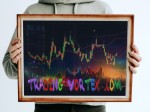
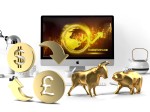
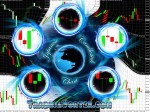
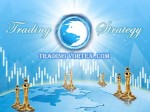
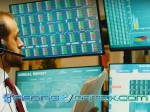
 TradingVortex.com® 2019 © All Rights Reserved.
TradingVortex.com® 2019 © All Rights Reserved.